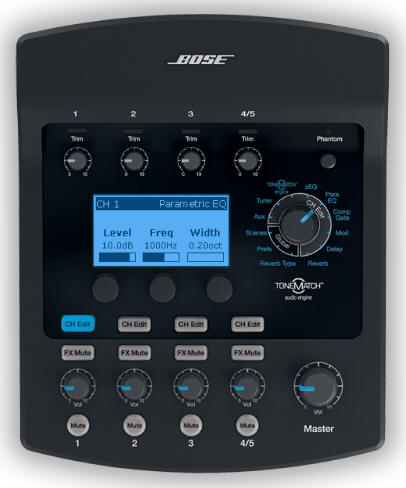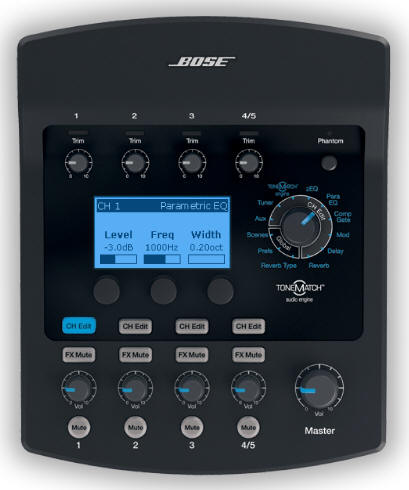Difference between revisions of "Feedback / T1 ToneMatch® Audio Engine"
m (ST moved page Feedback / T1 ToneMatch® Audio Engine to Feedback / T1 ToneMatch® Audio Engine) |
m (added video ToneMatch zEQ ParaEQ) |
||
| Line 30: | Line 30: | ||
This technique was described in [[T1 ToneMatch® Audio Engine / Using the Para EQ to Control Feedback - field report|a field report]] by Bill-at-Bose. | This technique was described in [[T1 ToneMatch® Audio Engine / Using the Para EQ to Control Feedback - field report|a field report]] by Bill-at-Bose. | ||
| + | Here is a video about the relationship between the ToneMatch Presets, zEQ, ParaMetric EQ. | ||
| + | |||
| + | <html> | ||
| + | <iframe width="560" height="315" src="https://www.youtube.com/embed/kkE24InOGWY" frameborder="0" allow="accelerometer; autoplay; encrypted-media; gyroscope; picture-in-picture" allowfullscreen></iframe> | ||
| + | </html> | ||
<noinclude> | <noinclude> | ||
Revision as of 10:44, 30 November 2018
The technique takes some practice and experimentation. But the effort is worth it because the technique can be used in many different situations.
You'll be using the parametric equalizer on the T1 ToneMatch Audio Engine to improve vocal microphone feedback. The parametric equalizer has a frequency adjustment to select the pitch (note) you want to shape, and a boost or cut adjustment to increase or decrease that pitch like a regular tone control. It also has a bandwidth knob, to set how wide a range of pitches around the single pitch you are adjusting.
- Turn the volume down on the microphone channel; mute any other microphone channels.
- Set the Para EQ Level to 10 dB boost (boost, not cut)
- Set the Para EQ Width to 0.20 oct
- Slowly turn up the volume of the microphone creating feedback to just before feedback. You'll probably start to hear the pitch that feeds back but don't let the feedback start.
- Start changing the Para EQ frequency control. At some point, the system will begin to feedback on the same pitch you were hearing without the boost. With some tuning and listening, you now have the Para EQ frequency set to the same (or very nearly the same) frequency causing feedback. You may need to change the volume of the microphone channel to avoid going into loud feedback.
- Change the ten dB boost to a cut, to notch out the frequency. Start with a cut of about 3 dB and use more only if necessary. That microphone should now be able to be used with less feedback.
If there are multiple microphones in the system you may find that the whole system feeds; if so, repeat this procedure for the other microphones (muting the other microphones while adjusting the Para EQ on one of them).
Once you know the frequency for one microphone (and the T1 tells you this in Hz), you can start by applying the same notch to other microphones -- but you may find that some adjustments are needed for each due to differences in the microphones and their different locations.
How much does this hurt the sound? You should experiment a little, since -- it depends. The notch will have different effects on the tone depending on how deep it is (how much you cut), how wide it is (keep it as narrow as you can), and where it is relative to your voice or instrument. Use your ears to tell you if you've gone too far.
This technique was described in a field report by Bill-at-Bose.
Here is a video about the relationship between the ToneMatch Presets, zEQ, ParaMetric EQ.


